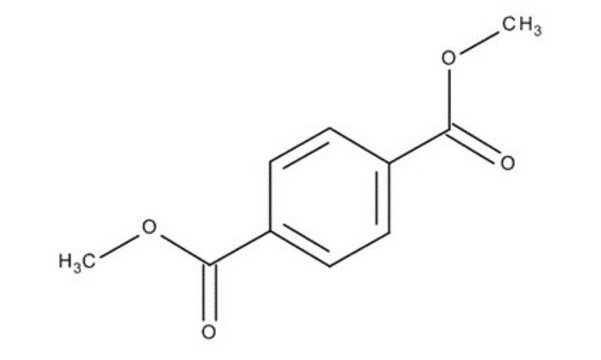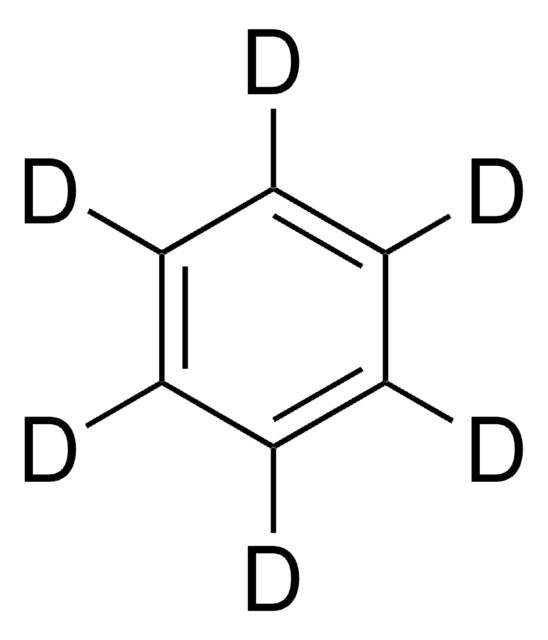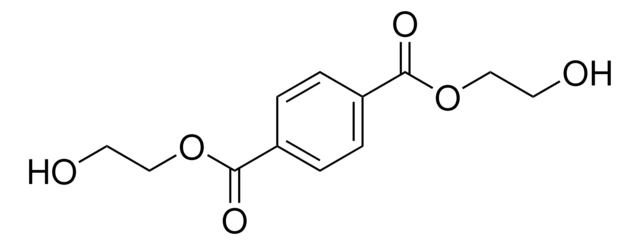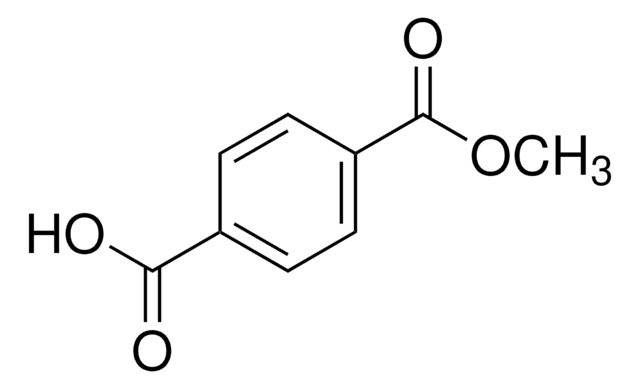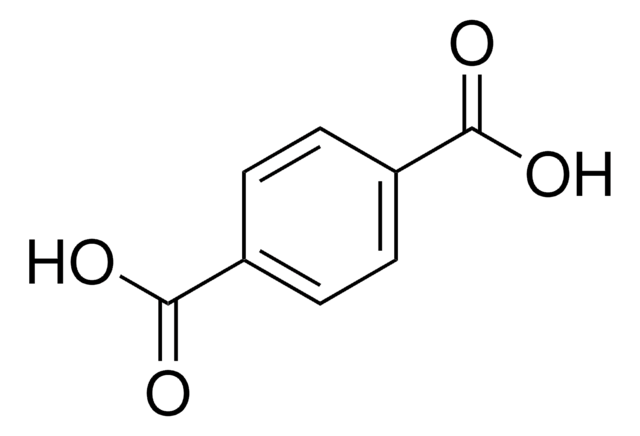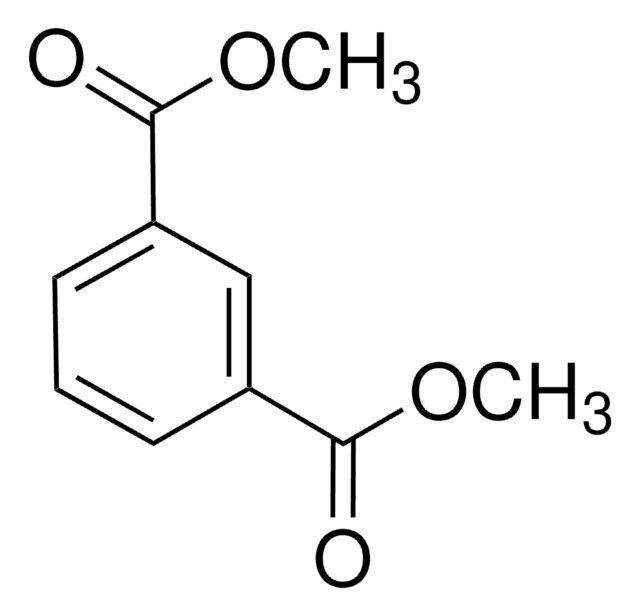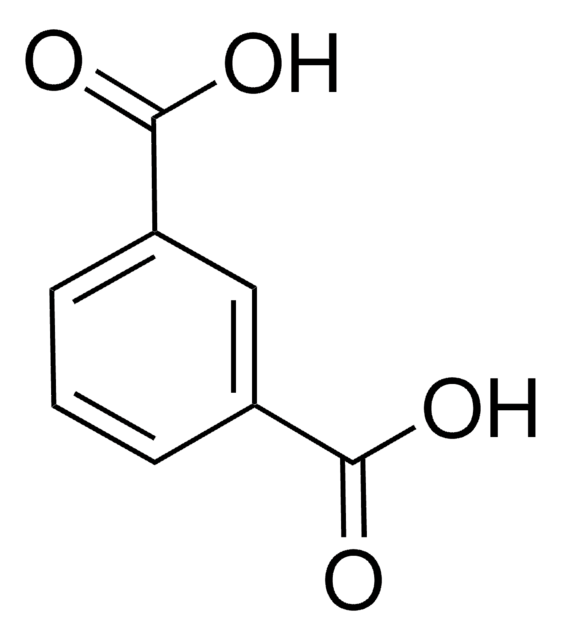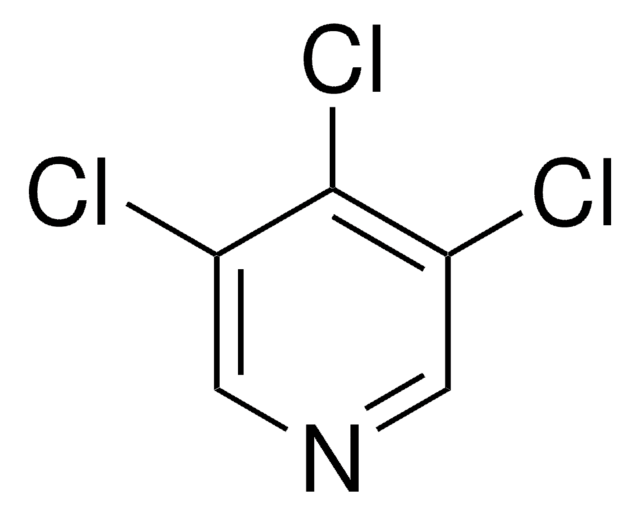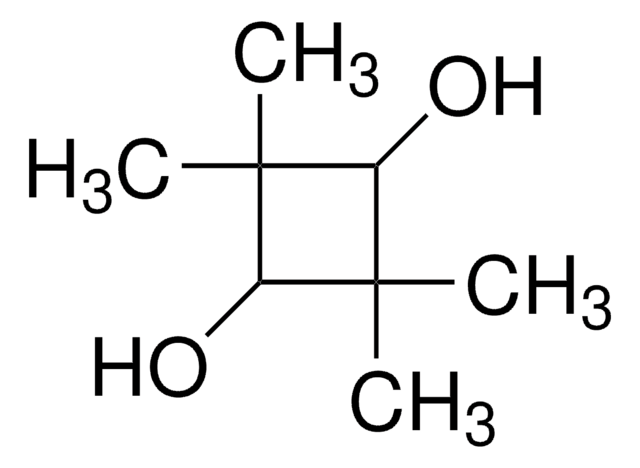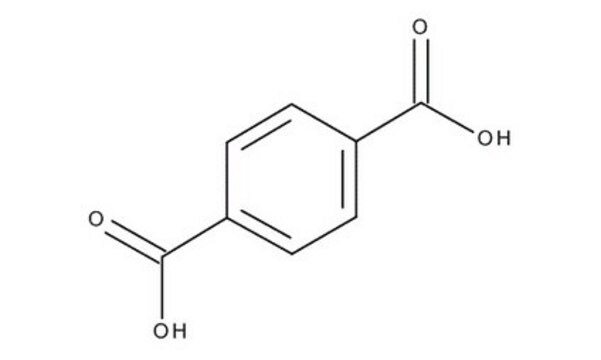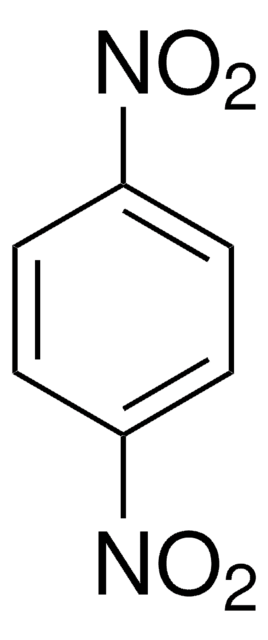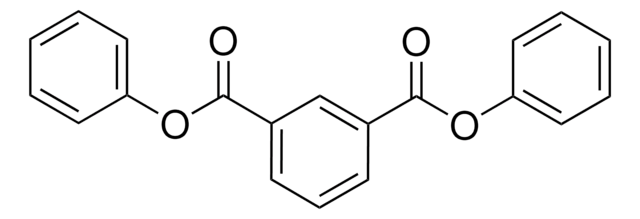Wichtige Dokumente
185124
Dimethylterephthalat
ReagentPlus®, ≥99%
Synonym(e):
DMT, Dimethyl 1,4-benzenedicarboxylate, Dimethyl p-benzenedicarboxylate, Dimethyl p-phthalate, Methyl 4-(carbomethoxy)benzoate
About This Item
Empfohlene Produkte
Dampfdichte
1.04 (vs air)
Qualitätsniveau
Dampfdruck
1.15 mmHg ( 93 °C)
Produktlinie
ReagentPlus®
Assay
≥99%
Form
(Powder or Crystals or Chunk(s))
Selbstzündungstemp.
1058 °F
mp (Schmelzpunkt)
139-141 °C (lit.)
Löslichkeit
water: slightly soluble 0.0493 g/L at 20 °C
Funktionelle Gruppe
ester
SMILES String
COC(=O)c1ccc(cc1)C(=O)OC
InChI
1S/C10H10O4/c1-13-9(11)7-3-5-8(6-4-7)10(12)14-2/h3-6H,1-2H3
InChIKey
WOZVHXUHUFLZGK-UHFFFAOYSA-N
Suchen Sie nach ähnlichen Produkten? Aufrufen Leitfaden zum Produktvergleich
Allgemeine Beschreibung
Anwendung
Rechtliche Hinweise
Lagerklassenschlüssel
11 - Combustible Solids
WGK
WGK 1
Flammpunkt (°F)
309.2 °F - (External MSDS)
Flammpunkt (°C)
154 °C - (External MSDS)
Persönliche Schutzausrüstung
Eyeshields, Gloves, type N95 (US)
Hier finden Sie alle aktuellen Versionen:
Besitzen Sie dieses Produkt bereits?
In der Dokumentenbibliothek finden Sie die Dokumentation zu den Produkten, die Sie kürzlich erworben haben.
Kunden haben sich ebenfalls angesehen
Unser Team von Wissenschaftlern verfügt über Erfahrung in allen Forschungsbereichen einschließlich Life Science, Materialwissenschaften, chemischer Synthese, Chromatographie, Analytik und vielen mehr..
Setzen Sie sich mit dem technischen Dienst in Verbindung.
